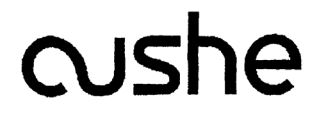

EGC: Likelihood of confusion between figurative mark ‘cushe’ and earlier ‘she’ marks
December 02, 2015
Categories:
Post date:
2. December 2015 - 14:49
The General Court (EGC) held that as the marks were phonetically identical and visually and conceptually similar they should be regarded as similar overall. Followed from this it was held that the mark at issue could be perceived by the relevant public as originating from the same undertaking or undertakings economically linked to the earlier word mark. The EGC upheld the invalidity action and found that there was likelihood of confusion (Judgment dated 15 October 2015; Case T‑642/13).
Background of the case and subject matter
On 10 October 2005 the applicant, Wolverine International LP, obtained an international registration designating the European Community for the figurative mark ‘cushe’ (No. 859087):
The mark was registered in Class 25 of the Nice Agreement for the goods ‘clothing, footwear and headgear’. On 20 September 2010 BH Store BV filed a request for a declaration of invalidity against the mark based on the following earlier trademarks:
- the word mark SHE, registered on 8 November 2000 in Germany (No. 39975501) for the goods in Class 25: ‘clothing, footwear and headgear’;
- the figurative mark ‘SHE’, registered on 25 April 2000 in Germany (No. 30018423) for goods included in Classes 3, 9, 16, 18 and 25 and reproduced below:
- the figurative mark ‘SHE’, registered on 15 January 2000 in Germany (No. 39726287) for goods in Classes 3 and 25, identical to the mark reproduced above.
Related
- "Neuschwanstein" is not a trademark!
- 1 December 2017: Madrid Monitor takes its place as the one and only tool for tracking international trademarks
- 1 January 2020 - Changes in Classifications - Trademarks, Designs, Patents and Utility Models
- 100th Anniversary of Bavaria (Germany) - A glance at trademarks, start-ups, innovation & events
- 10th Anniversary Edition - 10 Things to Know about LexDellmeier - Past, Present & Future
- 14 June 2013: Munich Patent Law Conference - Calculating Damages in Patent Infringement Cases
- 15 Top Brands - Interactive Brand Rating - Years 2000 - 2018
- 15 Years LexDellmeier - 2024 New Year Wishes
- 2014: Statistics for Community Trademarks
- 2024 World IP Day - Building Our Common Future with Innovation and Creativity

